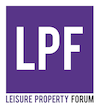Health and Fitness leisure properties
If you’re an operator in a gym or a leisure business within the health fitness sector, and you’re considering expansion, you’ll be thinking about location. You’ll hear plenty of advice on the pros and cons of considering a space outside or around the edge of your chosen town location, and whether somewhere on your members’ route home would be better. Where your target market lives and works will be key to this decision making process when it comes to the perfect location for a health & fitness business, as you’ll want your members to have easy access before work, during lunch, or in the evening. If you’re outside of central London, parking will be a key factor in your planning and, of course, the ‘vibe’ of the location will be important – does it say what you want it to say about your business and the membership you want to attract?
A perfect location for a health & fitness business?
However, before you even start considering this level of detail, it would pay to heed the words of Justin Rogers, Creative director, Ten Health and Fitness,
“With margins tighter than ever as a result, the difference between success and failure comes down to one simple fundamental: the ability to find the right space at the right rent, and make sure it generates the right amount of revenue.
If it doesn’t, everything else is irrelevant – no matter how cool your fit-out, how insta-friendly your trainers or how engaged your customers.”
Leisure properties – the landlord’s perspective
Andrew Russell, Portfolio Director Leisure at Landsec, and who sits on The Leisure Property Forum committee, also has wise words from the perspective of the Landlord –
“To succeed in this leasing market, leisure operators need to have a clear idea of what’s important to the success of their business, their key requirements and the areas where they can be flexible.
The majority of the operators we deal with at LandSec work on a leasing-based model, because buying freeholds would take up a lot of their capital, limit their opportunity to expand and would generally slow down their acquisition plans and roll-out of new units.
From a landlord’s perspective, operators in the health and fitness space for instance, need to articulate what their fitness chain offers, over and above a secure income stream and a solution to empty space. It’s critical that operators have the ability to clearly explain their concept, their competitive edge and USP. They need to demonstrate a deep understanding of their business – what makes it successful and what benefits it will bring to a landlord’s development.
Ideally an operator has existing units for landlords to look at that have been successful, as it always helps if landlords can see the concept in the flesh to show that the operator can deliver what they promise.
To communicate these things, a clear, well laid-out landlord pack that explains the concept, business plan, funding, customer type and benefits that the club will bring to the location is essential.”
The advantages of a gym for landlords
There’s more from the operators’ point of view from Adam Bellamy, CFO, PureGym
“In the last few years I’ve really seen a change, as landlords and developers have started to recognise the advantages of having a gym in their developments – gyms are attractive to consumers and can drive significant footfall, which in turn can attract other tenants.”
If you’d like to read more experts’ views on how to thrive in the current market, you can access the full article in Health Club Management here.

